Yucca: reproduction and care at home

Yucca is considered the favorite of many flower growers. And not in vain, because this evergreen tree does not require much attention. Quite often, this plant is found in various public institutions, but you can also breed it at home. At the same time, it is important to know the features of not only care, but also reproduction.
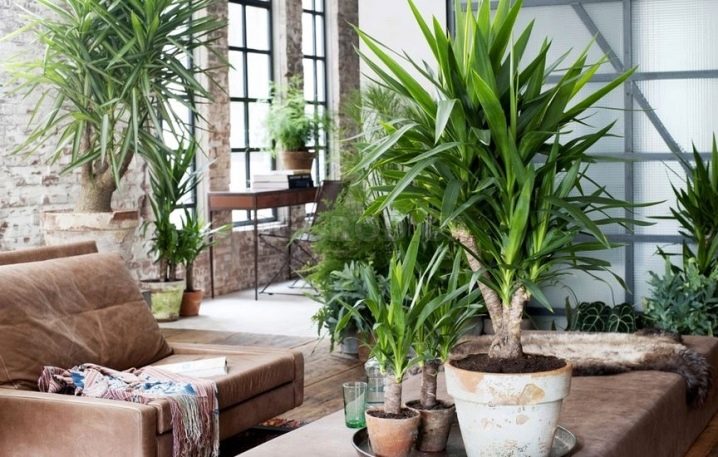
Conditions of detention
Very often this flower is called a false palm, but the yucca has nothing to do with this plant. It belongs to the asparagus family. In nature, it is more often found in the form of a shrub, but it can also look like a tree. Mexico is considered the homeland of yucca, many of its types are common in the southern United States and Central America.
This plant loves warmth and therefore in those regions where the temperature drops to minus ten degrees, it will not grow in the open field.
And in the countries of Southern Europe or America, yucca even blooms, it is decorated with cute bell buds. However, when grown at home, flowering is rarely achieved. If at least once in all the time it blooms, this is already great luck.
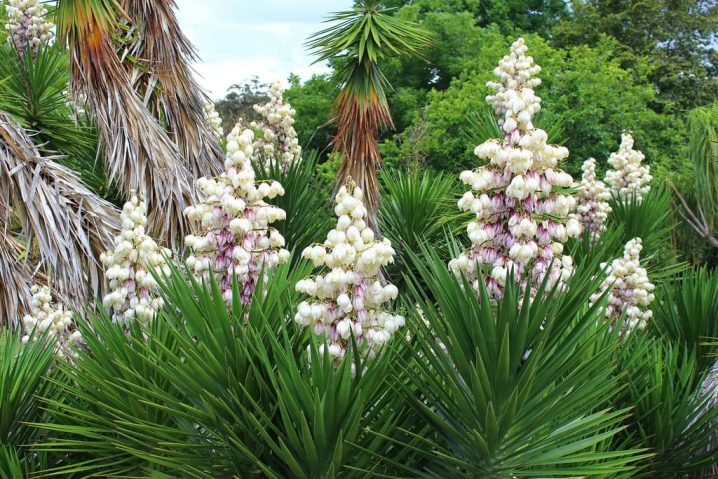
It is important, given the origin from southern countries, to create suitable conditions for the plant. Since yucca loves a warm climate and a bright space, bringing it into the house, you must immediately find the most illuminated place, otherwise it will turn pale and stretch. It is best to place the false palm on windows facing south or east. It is advisable that at any time of the year the temperature in the room where it is located does not fall below 26 ° C.
When transplanting, the soil for the plant can be purchased in special garden stores or made by yourself. To do this, you just need to mix sod and leafy soil with any humus, as well as peat.
With the arrival of summer, the flower can be taken out either to the balcony or to the veranda. But at the same time, you need to be sure that the temperature at night does not drop below six degrees. In winter, naturally, the plant must be brought back to a warm room. Since the nights during this period are short, it is also necessary to additionally extend the daylight hours for it with the help of artificial lighting.
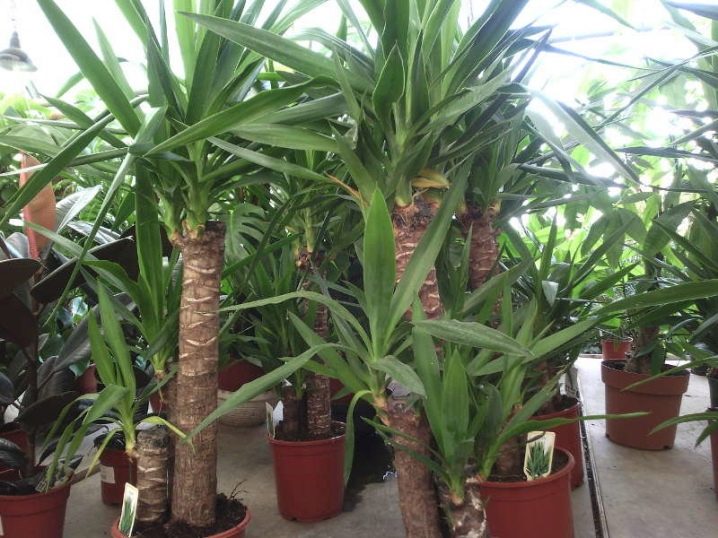
Reproduction methods
Many gardeners try to propagate yucca in order to get as many copies of the plant as possible. After all, it not only decorates the house, but also suits as an original gift. The tree is bred by different methods: cuttings, seeds, offspring, top. It is worth considering some of the methods step by step.
With the help of offspring
Almost throughout the summer, you can see that the yucca is covered with a large number of roots, which many novice gardeners are trying to get rid of. However, do not rush to remove them too; with the help of such offspring, you can propagate the plant. To do this, you need to do the following:
- cut off the largest processes with a sharp knife;
- place them in slightly moistened sand;
- from above you need to cover with a glass container;
- after about two months, sprouts should appear that can be transplanted into prepared pots.
It is best to carry out this procedure in the fall.
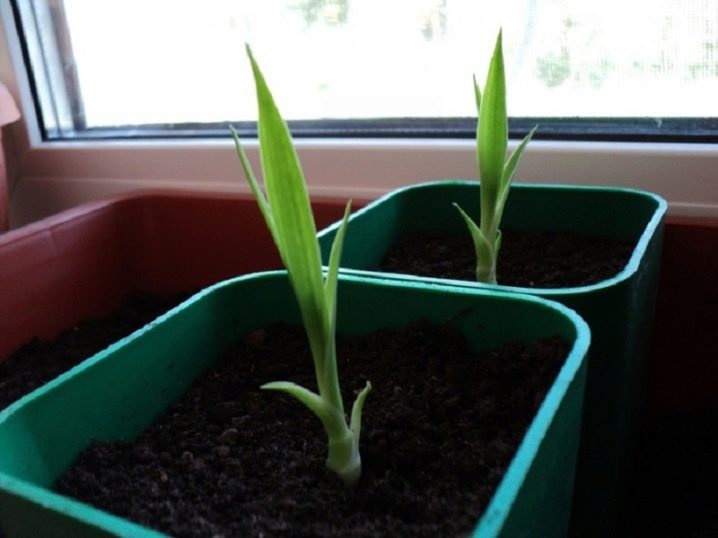
Cuttings
This is one of the easiest and most practical yucca breeding methods. If the false palm is slightly elongated, then it must be very carefully cut to the desired height. After that, follow the simple recommendations.
- The stem must be divided into several parts at once.The upper part of the cut must be lubricated with garden varnish, and the lower part must be dried for several hours.
- Then the cuttings must be immersed in the soil prepared in advance, which should include the following components: sand, earth and expanded clay. The substrate must be slightly moistened and covered with glass or a thick film, after which the container must be placed in a warmer place.
- Do not forget to ventilate the "greenhouse". This should be done every day.
- If necessary, you can pour with clean water at room temperature.
- When the first leaves appear, the glass is removed. After that, future plants are transplanted to a permanent place.
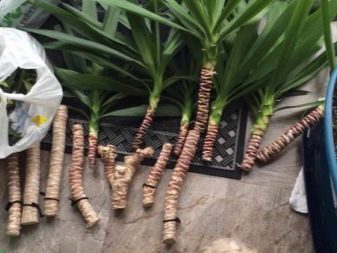
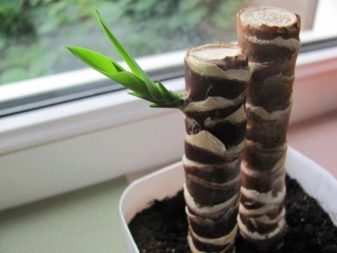
Seeds
Yucca hardly ever blooms at home, so the seeds will be very difficult to get. But if you still succeed in doing this, then you can try to grow a new tree in this way. Of course, this process is quite long and laborious.
- Before planting, seeds must be pour warm water for 24 hours.
- After that they need spread out on the surface of moistened soilwithout sinking too deep. By the way, he must also be correctly selected. The best substrate option is a mixture of woody soil and sand.
- So that the sprouts appear as quickly as possible, it is necessary to create a greenhouse effect... To do this, cover the container with glass, and then put it in a warm enough place.
- After a certain period of time, when the first shoots hatch, small yuccas are planted in separate pots.
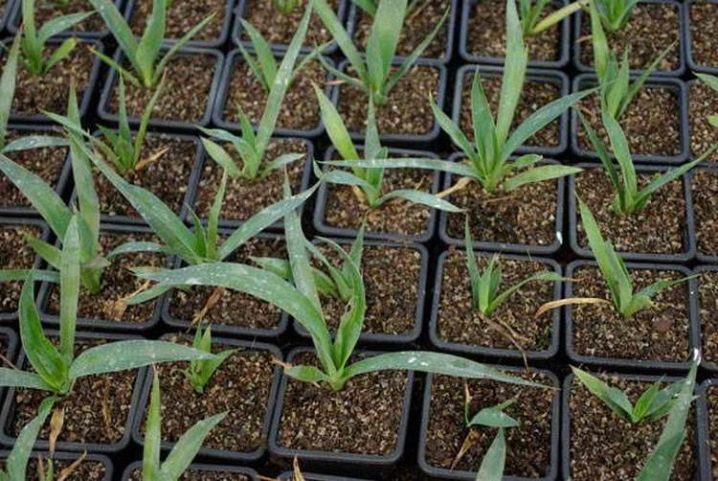
Top
If the plant stretches up, and the lateral processes do not appear, it is worth cutting off the top. As a result, you can get another yucca, and the long-awaited shoots at the main trunk may finally appear.
In order for the top to take root, it is best to gently immerse it in purified water and add one tablet of activated carbon, or plant the cut off part of the tree directly into the ground.
In the first case, when young roots appear, the plant will immediately need to be transplanted into a separate container. If the leaves begin to rot, the damaged areas must be removed.
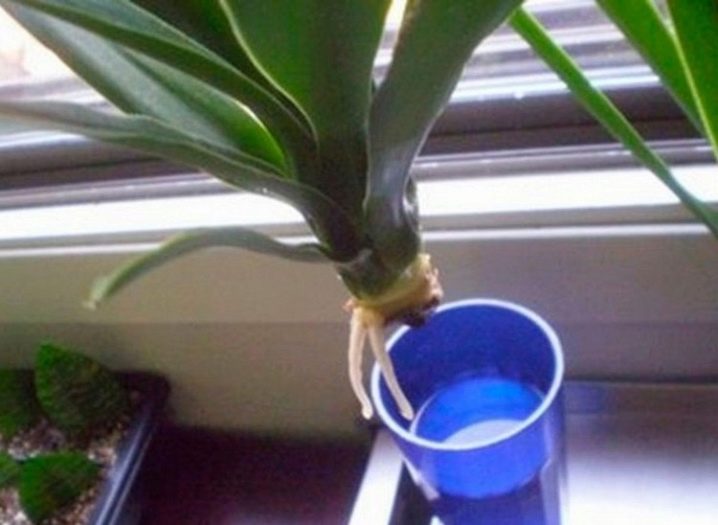
Barrel sections
Yucca is characterized by the fact that it has many "dormant" buds. They are evenly distributed throughout the entire stem of the plant. A single kidney can sprout stems if certain conditions are created for this. Usually, yucca spends all the nutrients to create leaves. Therefore, the buds will begin to develop more actively if you cut off the top
After that, it is necessary to separate several sections of the trunk, the length of which should be up to 18 centimeters. They should be planted in a previously prepared soil, then covered with glass or foil, creating a "greenhouse", and wait for the emergence of sprouts. This should be done in the spring. After the first leaves appear, the segments can be seated in small containers.
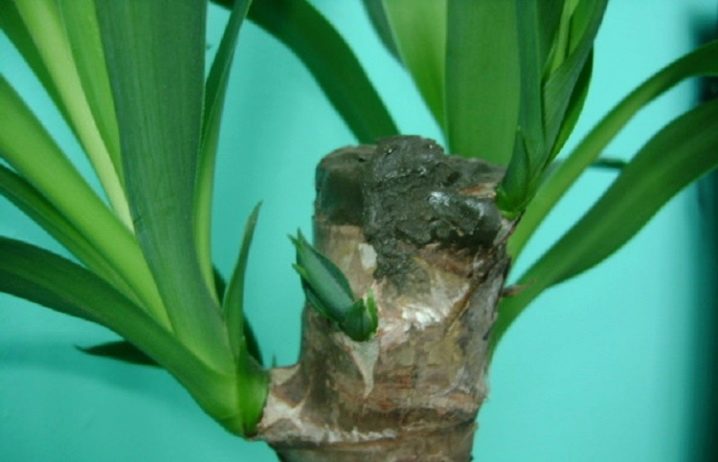
Further care
When small plants are transplanted to their "permanent residence", they need proper care. Like adult yuccas, they need warmth and proper lighting. The ideal conditions created will allow you to grow a strong green tree.
Do not forget about watering young plants. The amount of water for this primarily depends on the season. For example, on hot summer days, yucca requires more frequent watering, but in winter its needs are significantly reduced.
It is necessary to water the plant only when the earth dries out by at least 5 centimeters. Otherwise, the roots may rot and the tree may die.
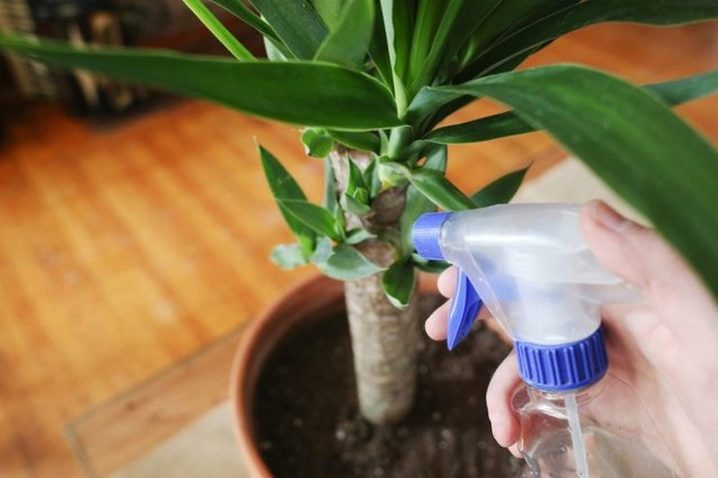
If we talk about transplanting a plant, then this is done extremely rarely, since yucca roots grow very slowly. This is best done when another trunk appears. Then you need to get the plant out of the container, before watering it well. Then the roots must be lightly cleaned of the ground and cut off one third of the crown. The root system is divided into two parts so that each tine has good roots.
Places that were accidentally injured must be treated with a disinfectant.Then the trees need to be planted in separate pots. They should not be very wide, as the plant will immediately slow down its growth. Spring is considered the best time for transplanting. In this season, the plant quickly takes root and practically does not get sick, but in the autumn, on the contrary, it can be affected by a fungus.
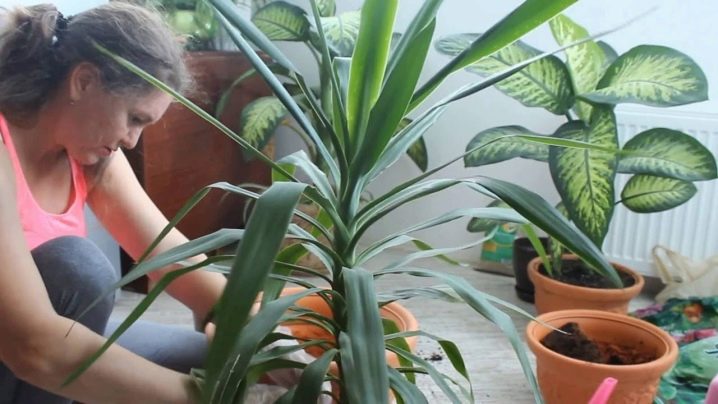
Pruning
This process is also very important for the yucca, as it allows you to form a beautiful luxurious crown. However, trimming can only be done when the trunk is at least eight centimeters in volume. In addition, it must be borne in mind that the remaining part will practically not grow anymore, which means that it is necessary to cut it off when the plant reaches the desired height.
The cut must be done so that as much of the stem part remains as possible. The cut site must be treated with a garden varnish prepared in advance or any disinfectant. After that, watering should be done once every three days. After a while, lateral processes will appear on the trunk.
To summarize, we can say that yucca is an exotic and highly ornamental plant.
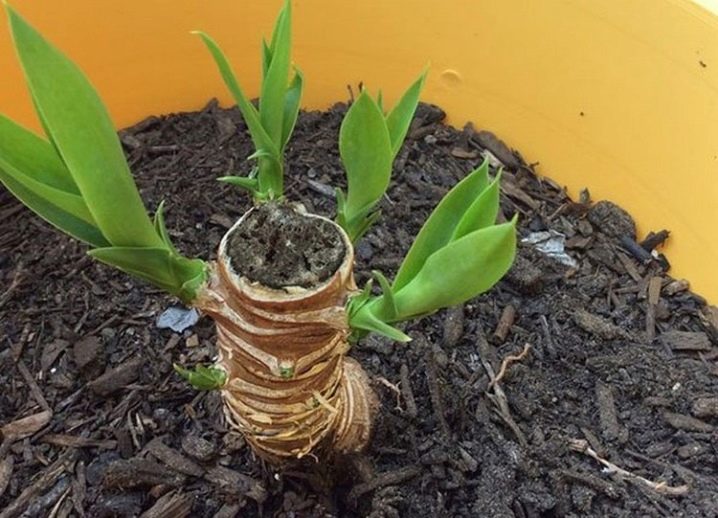
Evergreen trees can decorate any home and institution, if provided with the necessary conditions, care and regular watering.
For tips on caring for a yucca at home, see the next video.






























The comment was sent successfully.